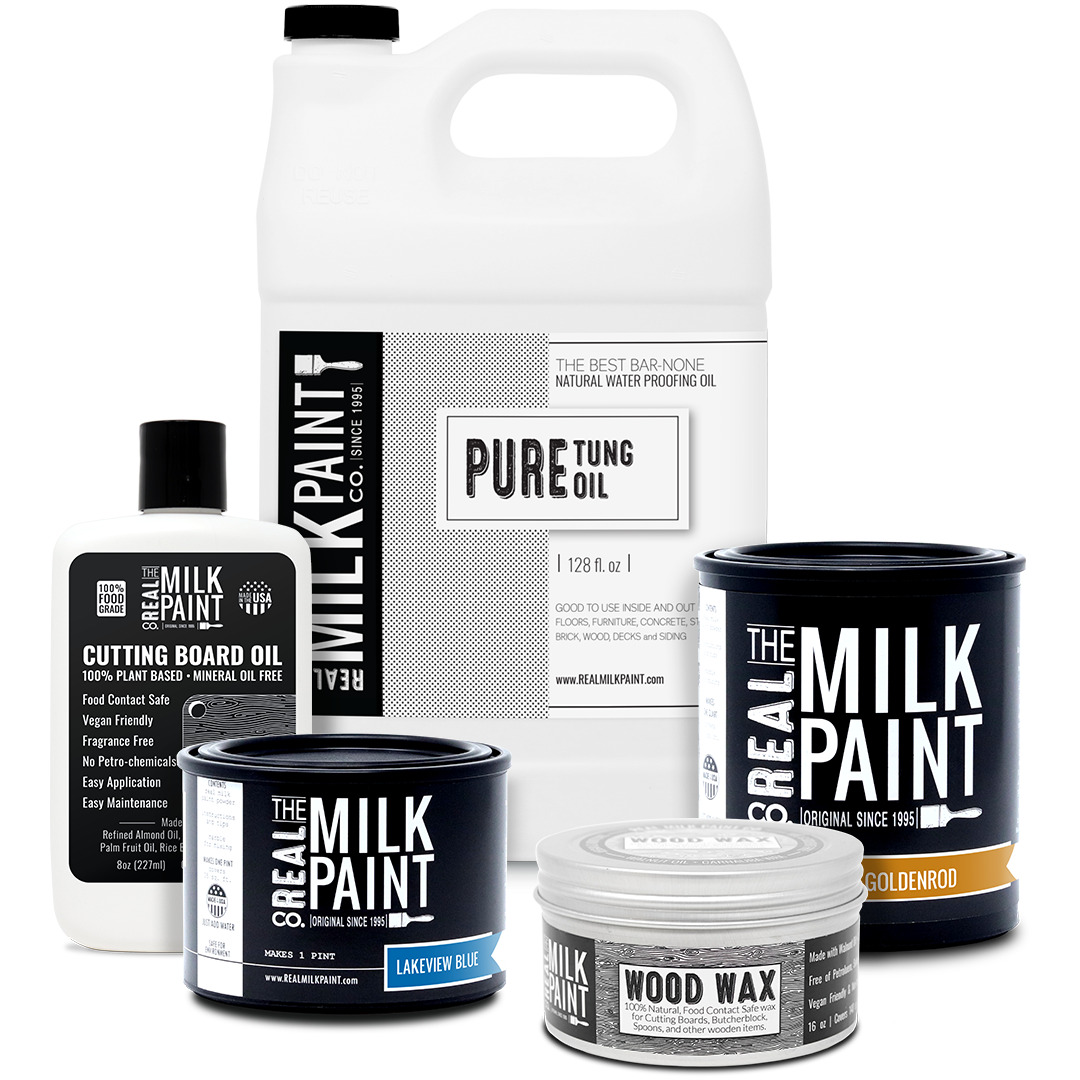
Canoe Paddle, sealed with Hemp Oil, by @southernwoodpaddle
Keeping canoe paddles well maintained takes a little elbow grease, and there’s lots of debate among rowers as to whether varnish or oil finishes make the best choice for finishing. While varnish gets the job done, using water-resistant oil for paddles, such as Pure Tung Oil from The Real Milk Paint Co., proves a much easier task. Keep in mind, however, that Pure Tung Oil for finishing paddles needs frequent application, especially during the first year or so of your rowing equipment’s life. Fortunately, application tasks are aided by Pure Tung Oil’s smooth-flowing formulation that mixes easily with Citrus Solvent for deep penetration and smooth spreading across the wood.
Finishing Your Canoe Paddle
Before adding finishing oil for paddles to your equipment, sand the blade with 220-grit sandpaper to open the wood’s pores up to improve penetration. Higher grit than this tends to just polish the wood, which has the potential to hinder absorption. If the paddle already has a finish that you need to remove, use Soy Gel paint and urethane stripper by The Real Milk Paint Co. to clear away all the old stain. After you complete the sanding portion of the process and strip away any finish, be sure to wipe the paddle down to remove all the grit, grime, and dust. Next, add water- or alcohol-based stain to the surface if extra color is desired. Avoid the use of oil-based stains and wood conditioners as both types of products seal the wood and inhibit penetration by Pure Tung Oil.
Next, decide if the viscosity of the Pure Tung Oil requires thinning before continuing. (Alternatively, you can use Hemp Oil to finish your paddles as well!) The thickness of the product can potentially make it hard to work with on newer wood, though old or dry wood might not require thinning for easy working. If you decide to thin the Pure Tung Oil, consider Citrus Solvent from The Real Milk Paint Co. or odorless mineral spirits. Keep in mind that for thinners, you need an oil-based solvent rather than a water-based one. Also, dense woods like teak sometimes require thinning solvent at a 2-to-1 ratio to Pure Tung Oil, so plan accordingly if your canoe paddle is made of these woods. To save time, The Real Milk Paint Co. makes Half & Half, a product that combines Pure Tung Oil and Citrus Solvent in equal proportions for easy use.
Now you’re ready to apply your first coat of Pure Tung Oil, and you can do this with a brush, a clean rag, or even a sprayer if you thin it enough. Apply it liberally over the blade, then give it at least 40 minutes to absorb before continuing. After the time elapses, coat the canoe paddle again and wait another 40 minutes. Repeat this process several times with 40 minutes between coats. What you will want to see is the oil stop absorbing and begin to pool or puddle on a majority of the paddle. After this, wipe the paddle down with a clean cloth, removing excess oil, and allow it to rest and dry overnight to prevent tackiness. Repeat the process the following day, then leave the paddle to cure in a well-ventilated spot that’s warm, dry, and clean. Keep in mind that curing usually takes at least 30 days as Pure Tung Oil cures via natural polymerization rather than evaporation.
Alternatively, the submersion method of using Pure Tung Oil for finishing canoe paddles saves you all the rubbing and brushing by letting you soak your rowing equipment in a bath of Pure Tung Oil or Half & Half. To finish your canoe paddle this way, make sure your container allows full submersion. Since Pure Tung Oil has no volatile organic compounds (VOCs) in its formulation, it doesn’t overwhelm you during use. Leave the paddle submerged in the bath for 24 to 48 hours, then pull it out, wipe off the excess Pure Tung Oil and hang it somewhere warm, clean, and dry for curing.
Canoe Paddle, sealed via submersion with Half & Half, by @seaman_custom_builds
Canoe Paddle, sealed with Hemp Oil, by @southernwoodpaddle
You typically can tell that no more oil is needed when the surface of your canoe paddle puddles up after adding oil or it has a uniform finish after drying, with no uneven or flat areas. Unlike some other oils, Pure Tung Oil has a long lifespan and doesn’t darken your wood, but if you want a darker hue, consider using Dark Tung Oil for finishing canoe paddles. Though a wax topcoat may confer some advantages in terms of glide in the water, it’s not required to make your rowing equipment waterproof as Pure Tung Oil adds that quality naturally.
Maintaining Your Canoe Paddle
When you use Pure Tung Oil for finishing paddles, you typically just need to reapply it once per year to maintain the matte finish. Even though Pure Tung Oil confers UV resistance to surfaces, it still makes sense to put your canoe paddle away in a darker space when not in use and store it in a well-maintained space free of moisture, mold, and mildew. Also, make sure to wipe it down after each use to remove excess water to help extend the lifespan of your canoe paddle.

Canoe Paddle, sealed with Half & Half, by @seaman_custom_builds

